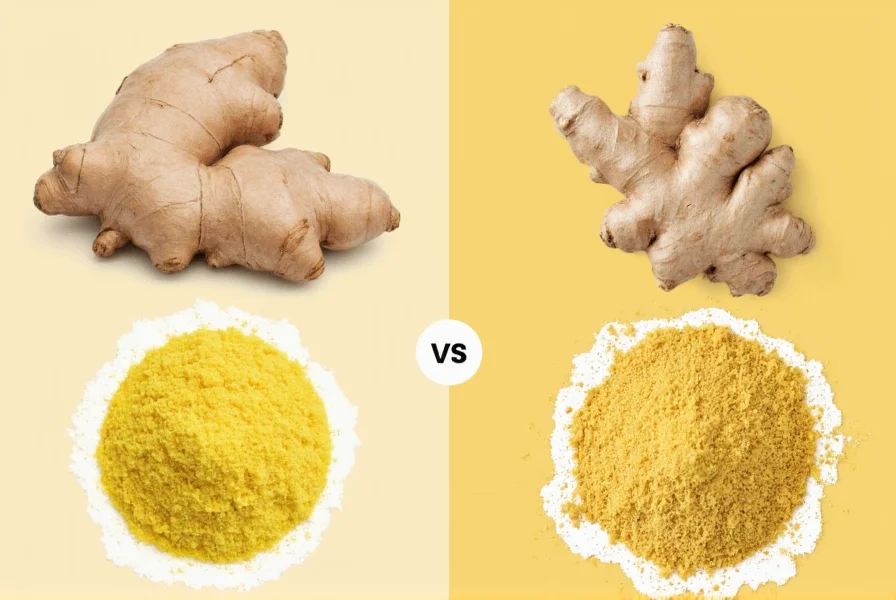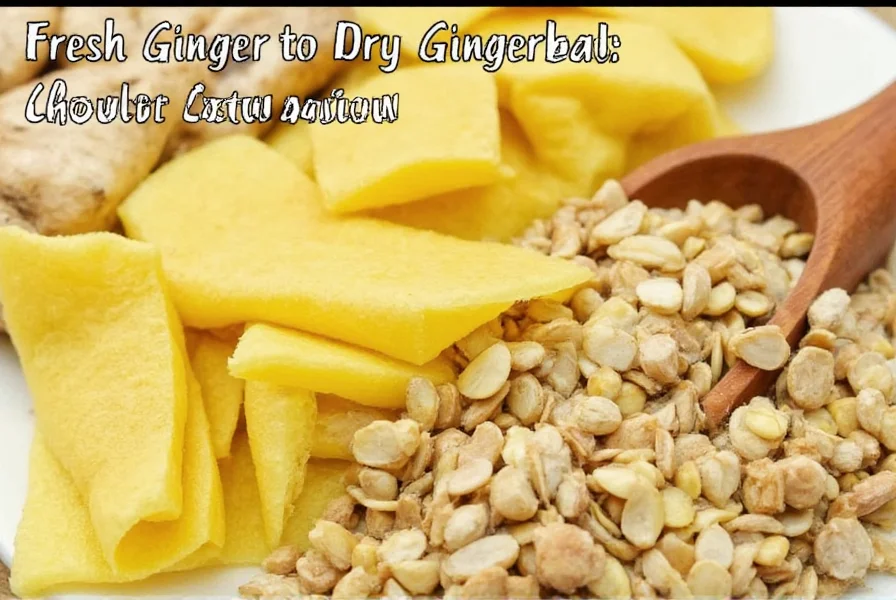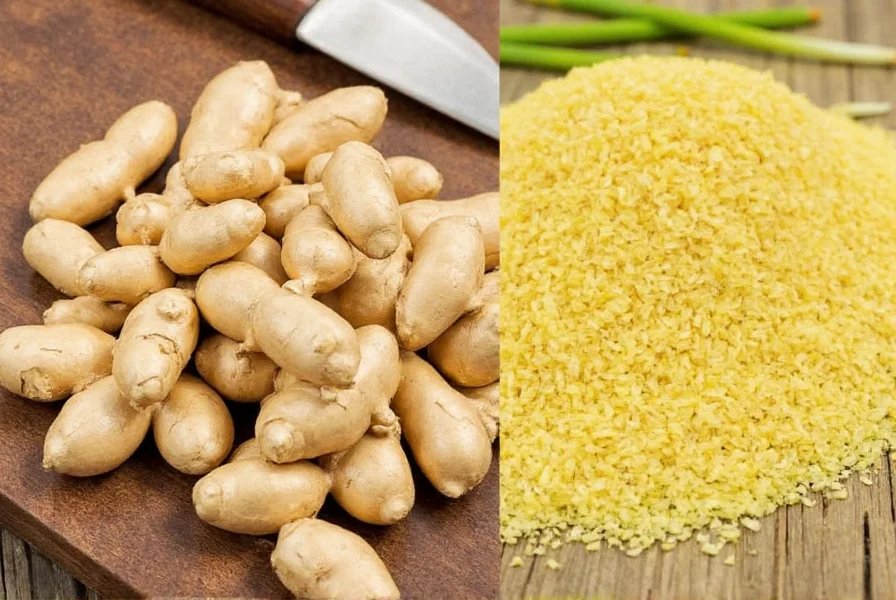Transforming fresh ginger to dry ginger preserves this versatile root for year-round use while intensifying its bioactive compounds. Dried ginger offers distinct advantages over fresh varieties, including extended shelf life, concentrated flavor profile, and enhanced availability of certain therapeutic compounds. Understanding the proper conversion process ensures you maintain maximum nutritional value and potency throughout the drying procedure.
Understanding Fresh vs. Dry Ginger Differences
Ginger undergoes significant chemical changes during the drying process. Fresh ginger contains approximately 80% water content, while properly dried ginger reduces to 5-8% moisture. This dehydration concentrates ginger's active compounds, particularly gingerols which transform into shogaols—compounds with increased antioxidant and anti-inflammatory properties. The conversion process essentially creates a more potent medicinal product while changing the flavor profile from bright and citrusy to warm and spicy.
| Characteristic | Fresh Ginger | Dry Ginger |
|---|---|---|
| Moisture Content | 75-85% | 5-8% |
| Primary Active Compounds | Gingerols | Shogaols (from gingerol transformation) |
| Flavor Profile | Bright, citrusy, mildly spicy | Warmer, more intense, complex spice |
| Shelf Life | 2-3 weeks refrigerated | 1-2 years when properly stored |
| Conversion Ratio | 1 part fresh | Approximately 1/4 part dried |
Effective Methods for Converting Fresh Ginger to Dry Ginger
Three reliable techniques transform fresh ginger to dry ginger while preserving maximum potency. Each method requires quality ginger root with firm texture and smooth skin—avoid roots with wrinkles, soft spots, or mold.
Air Drying Method (Traditional Approach)
Clean ginger thoroughly and slice into uniform 1/8-inch thick pieces. Arrange slices on mesh drying racks with ample air circulation. Place in a warm, dark location with good ventilation (75-85°F/24-29°C). Turn slices daily for even drying. Complete dehydration typically takes 7-14 days. Test for dryness by bending a piece—it should snap cleanly without flexibility. This traditional method preserves compounds effectively but requires patience and proper environmental conditions.

Oven Drying Method (Faster Alternative)
Preheat your oven to its lowest setting (ideally 140°F/60°C). Prepare ginger by peeling and slicing into 1/8-inch uniform pieces. Arrange on parchment-lined baking sheets without overlapping. Place in oven with door slightly ajar to allow moisture escape. Check every 30 minutes after the first hour, rotating trays for even drying. Total drying time ranges from 2-4 hours depending on oven accuracy and ginger thickness. Properly dried ginger becomes brittle and snaps when bent. This method offers more control than air drying but requires careful temperature monitoring to prevent cooking rather than drying the ginger.
Dehydrator Method (Most Consistent Results)
For optimal fresh ginger to dry ginger conversion, a food dehydrator provides the most consistent results. Peel and slice ginger into uniform 1/8-inch pieces. Arrange on dehydrator trays without overlapping. Set temperature to 135°F (57°C) and dry for 8-12 hours. Check periodically after 6 hours—ginger should become hard and brittle. The consistent airflow and precise temperature control in dehydrators preserve maximum gingerol content while ensuring complete moisture removal. This method represents the best balance of efficiency and quality preservation for home use.

Proper Storage Techniques for Dried Ginger
After successfully converting fresh ginger to dry ginger, proper storage maintains quality. Cool completely before storing to prevent condensation. Use airtight glass containers away from light and heat sources. Include silica gel packets to absorb residual moisture. Properly stored dried ginger maintains potency for 12-24 months. Check periodically for moisture or mold. For extended storage, keep in the freezer where dried ginger remains viable for up to 3 years without significant quality loss.
Using Your Dried Ginger: Practical Applications
Dried ginger offers versatile culinary and medicinal applications. Grind into powder using a spice grinder for baking, chai blends, or supplement use. The fresh ginger to dry ginger conversion creates a more concentrated product—use approximately 1/4 teaspoon dried ginger powder to replace 1 teaspoon fresh ginger in recipes. Steep dried slices in hot water for potent ginger tea that delivers stronger anti-nausea effects than fresh ginger preparations. Incorporate into spice rubs, marinades, or traditional Ayurvedic formulations where the intensified shogaol content provides enhanced therapeutic benefits.
Troubleshooting Common Drying Issues
Improper drying creates several common problems. If ginger remains flexible after drying, return to the dehydrator or oven for additional time—incomplete drying leads to mold. Darkening indicates excessive heat; reduce temperature in future batches. Musty odors suggest residual moisture; re-dry immediately. For optimal fresh ginger to dry ginger conversion, maintain temperatures below 150°F (65°C) to preserve heat-sensitive compounds. Always label dried ginger with the preparation date to track freshness.
Frequently Asked Questions
What is the conversion ratio from fresh ginger to dry ginger?
Approximately 4 parts fresh ginger yield 1 part dried ginger by weight. This 4:1 ratio accounts for the significant moisture loss during dehydration. When substituting in recipes, use 1/4 teaspoon dried ginger powder to replace 1 teaspoon fresh ginger.
Does drying ginger destroy its medicinal properties?
Drying actually transforms and concentrates certain medicinal compounds. While fresh ginger contains higher levels of gingerols, the drying process converts these to shogaols, which have greater antioxidant activity and bioavailability. Properly dried ginger retains 70-80% of its original bioactive compounds with enhanced therapeutic properties for digestion and inflammation.
Can I dry ginger with the skin on?
Yes, you can dry ginger with skin intact, which preserves additional nutrients found in the outer layer. However, most traditional preparations peel ginger before drying to ensure consistent texture and remove potential contaminants. If keeping the skin on, thoroughly scrub the ginger and consider organic sources to avoid pesticide residues.
How do I know when ginger is completely dry?
Properly dried ginger should be hard and brittle, snapping cleanly when bent rather than bending or flexing. It should have no visible moisture and feel completely dry to the touch. When broken, the interior should appear uniformly dry without any translucent or moist areas. The drying process typically reduces ginger's weight by 75-80%.
What's the best way to grind dried ginger?
For the finest powder, use a dedicated spice grinder or high-powered blender. Grind in small batches to prevent overheating, which can degrade volatile compounds. Sift the powder and regrind any coarse pieces. Store immediately in an airtight container away from light. For small quantities, a mortar and pestle works effectively while preserving maximum potency through gentle grinding.











 浙公网安备
33010002000092号
浙公网安备
33010002000092号 浙B2-20120091-4
浙B2-20120091-4